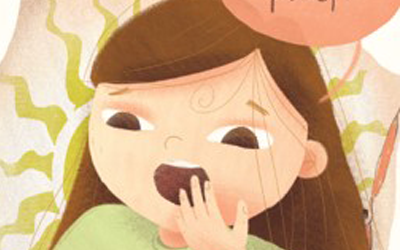Parasomnia refers to a group of sleep disorders that involve abnormal behaviors, movements, emotions, perceptions, and dreams during sleep. These disorders can significantly impact a child’s sleep quality and lead to daytime sleepiness, mood changes, and behavioral issues. In this blog post, we will explore the common types of parasomnia in children, their causes, and offer tips for parents to help their children overcome these challenges.
Types of Parasomnia in Children
1. Nightmares: Nightmares are frightening dreams that cause a child to wake up feeling scared or anxious. They can be caused by stress, anxiety, and exposure to scary media.
2. Sleepwalking: Sleepwalking is a condition in which a child gets up and walks around during sleep. It can be caused by genetics, stress, and medications.
3. Night terrors: Night terrors are episodes of intense fear and panic that occur during sleep. They are more common in younger children and can be caused by genetics, stress, and sleep deprivation.
4. Sleep talking: Sleep talking is a condition in which a child talks during sleep. It can be caused by genetics, stress, and sleep deprivation.
Causes of Parasomnia in Children
Parasomnia can be caused by a variety of factors, including genetics, stress, medications, sleep deprivation, and sleep disorders such as sleep apnea. Additionally, anxiety and trauma can also contribute to parasomnia in children.
Tips for Parents to Help Children Overcome Parasomnia
1. Establish a consistent sleep routine: A consistent sleep routine can help regulate a child’s sleep cycle and reduce the likelihood of parasomnia.
2. Create a calm sleep environment: Creating a calm and peaceful sleep environment can help a child feel relaxed and reduce the likelihood of parasomnia.
3. Encourage good sleep hygiene: Encouraging good sleep hygiene, such as limiting screen time before bed and avoiding caffeine, can help improve a child’s sleep quality and reduce the likelihood of parasomnia.
4. Seek professional help: If parasomnia is impacting a child’s sleep quality and daily life, seek professional help from a sleep specialist or mental health provider.
Conclusion
Parasomnia is a group of sleep disorders that can significantly impact a child’s sleep quality and daily life. Understanding the common types of parasomnia, their causes, and offering appropriate support and resources can help parents help their children overcome these challenges. By establishing a consistent sleep routine, creating a calm sleep environment, encouraging good sleep hygiene, and seeking professional help when needed, parents can help their children get the restful and restorative sleep they need.
For our picture book that helps children and parents learn how to improve sleep habits click here




0 Comments